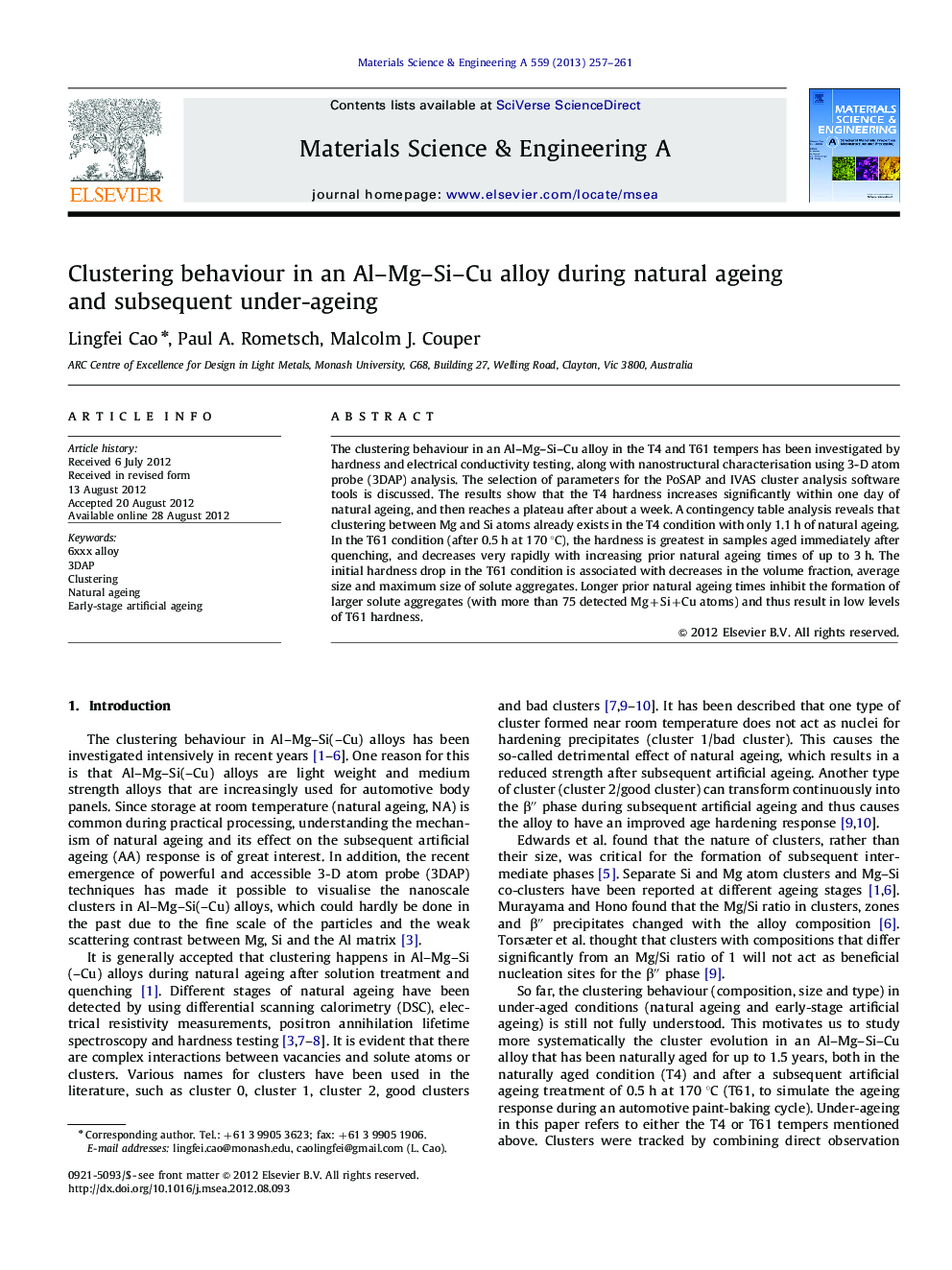| Article ID | Journal | Published Year | Pages | File Type |
|---|---|---|---|---|
| 1576657 | Materials Science and Engineering: A | 2013 | 5 Pages |
The clustering behaviour in an Al–Mg–Si–Cu alloy in the T4 and T61 tempers has been investigated by hardness and electrical conductivity testing, along with nanostructural characterisation using 3-D atom probe (3DAP) analysis. The selection of parameters for the PoSAP and IVAS cluster analysis software tools is discussed. The results show that the T4 hardness increases significantly within one day of natural ageing, and then reaches a plateau after about a week. A contingency table analysis reveals that clustering between Mg and Si atoms already exists in the T4 condition with only 1.1 h of natural ageing. In the T61 condition (after 0.5 h at 170 °C), the hardness is greatest in samples aged immediately after quenching, and decreases very rapidly with increasing prior natural ageing times of up to 3 h. The initial hardness drop in the T61 condition is associated with decreases in the volume fraction, average size and maximum size of solute aggregates. Longer prior natural ageing times inhibit the formation of larger solute aggregates (with more than 75 detected Mg+Si+Cu atoms) and thus result in low levels of T61 hardness.
